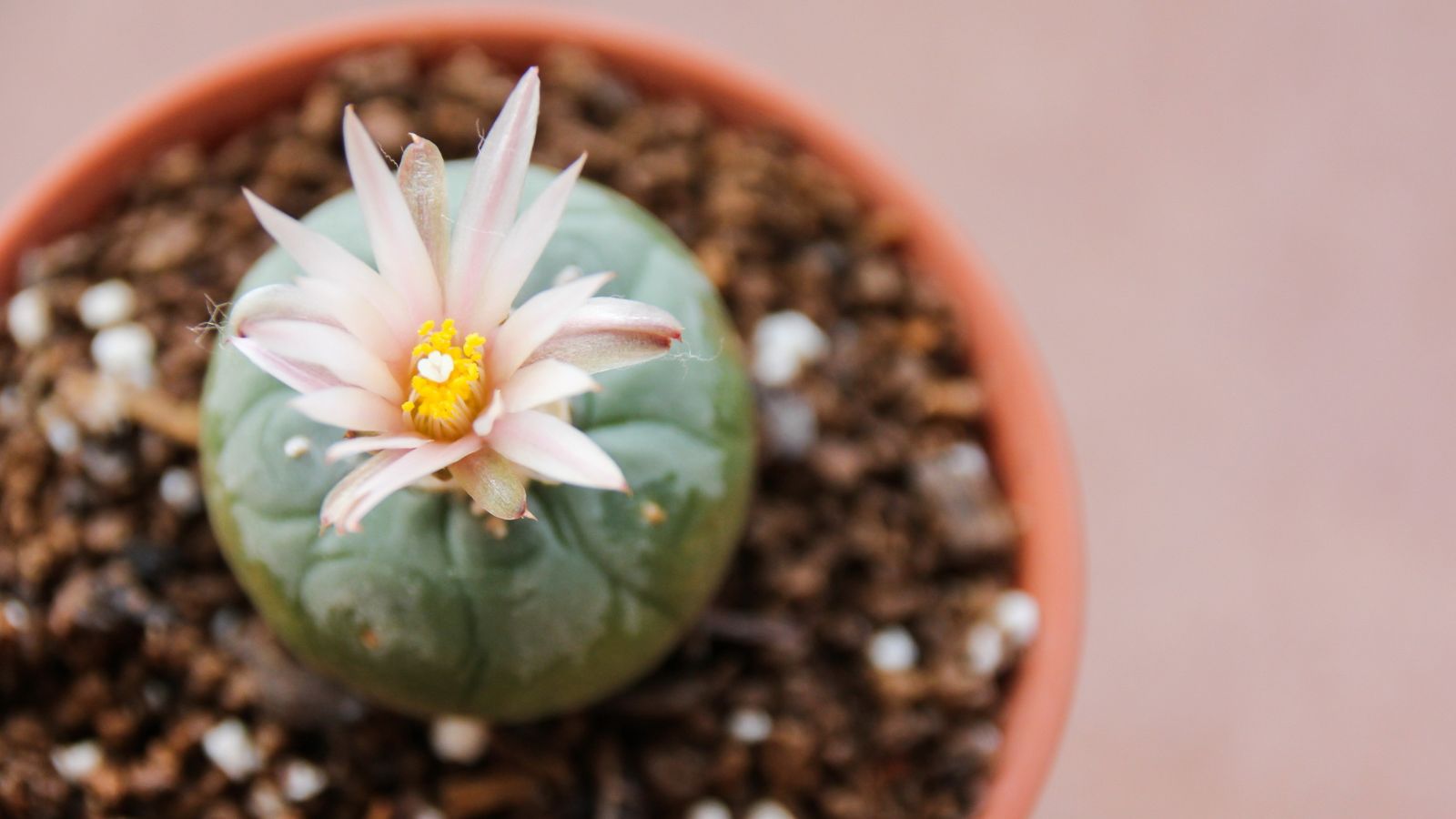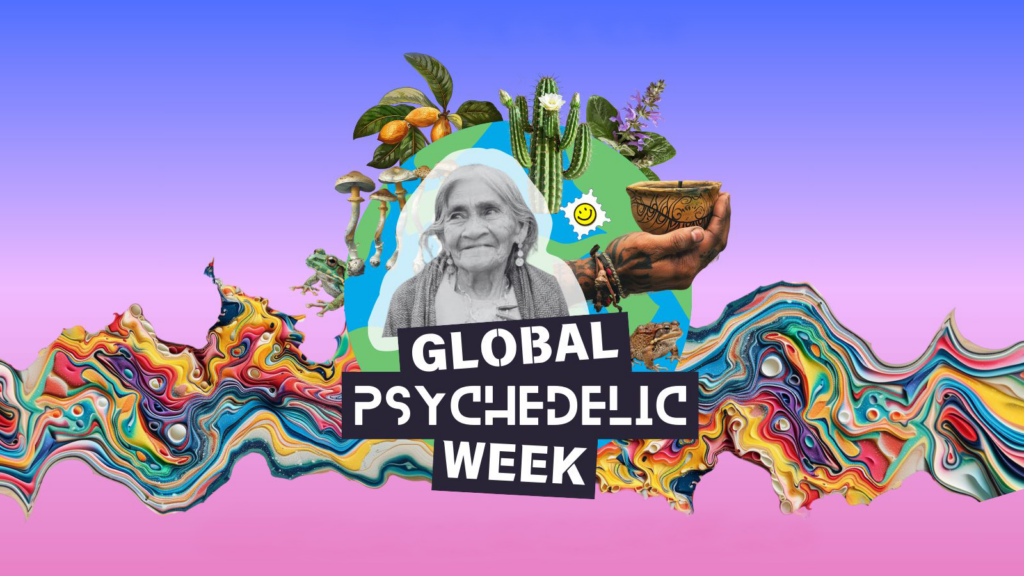In the last century, peyote crossed the threshold into pop cultural and countercultural consciousness becoming a psychedelic superstar and the world’s most famous cactus in the process.
Many people know peyote from Aldous Huxley’s book, The Doors of Perception, Lou Diamond Phillips’ character eating peyote in the movie Young Guns, or when Homer Simpson eats the Guatemalan insanity “pepper” and hallucinates a coyote in the desert.
Blips like these on pop culture’s radar have propelled peyote in recent times. However, peyote’s rich history reaches much further back in time. Before taking a trip through history, let’s do a quick briefing on peyote’s basics.
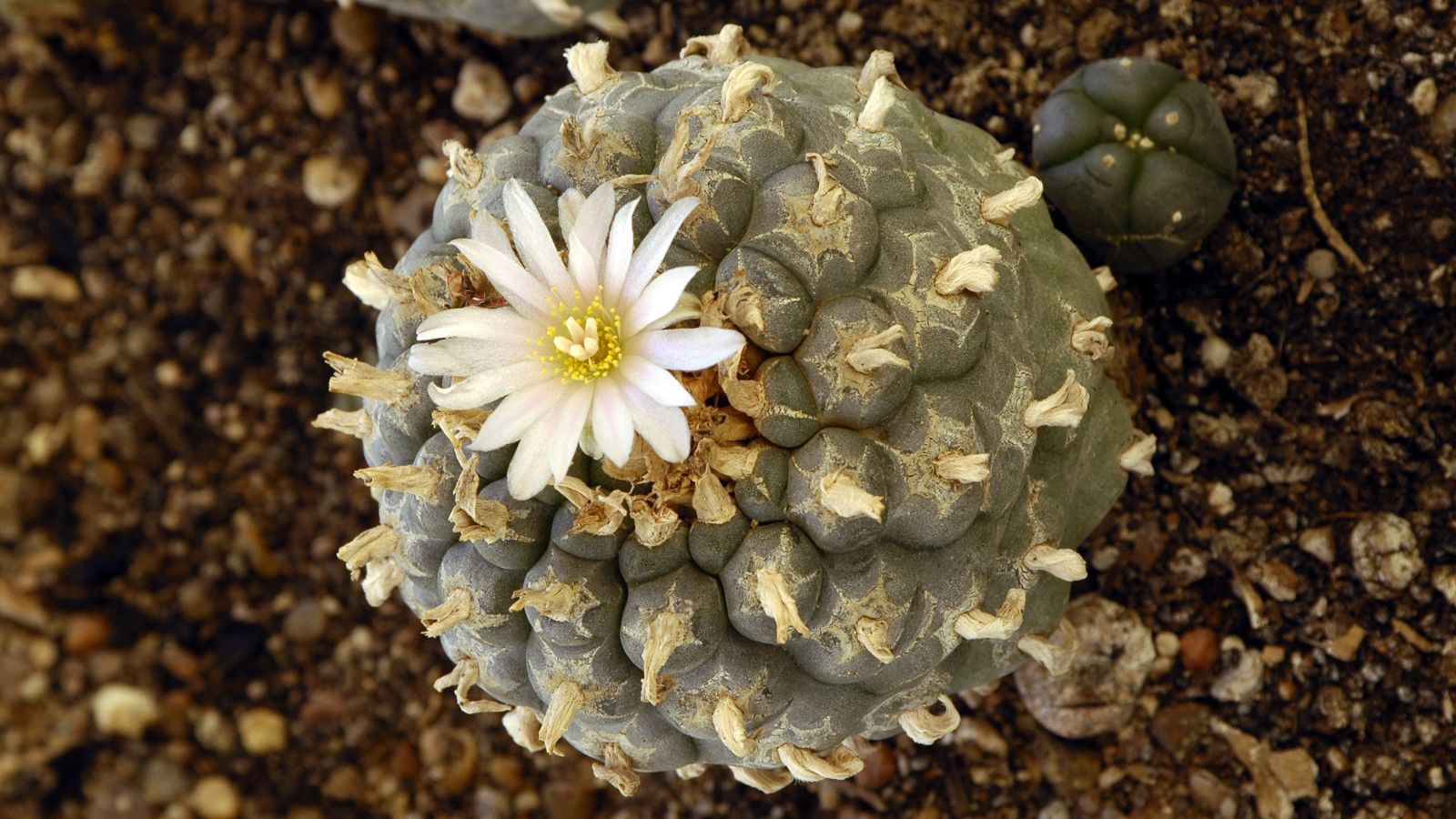
The Biological Profile of Peyote
Peyote is a psychedelic cactus (Lophophora williansii). The cute, rounded, and diminutive cactus often displays a white flower in the middle, and adults have no spines. Peyote contains over 60 hallucinogenic alkaloids from the phenylethylamine family, the most famous being mescaline.
Although mescaline produces potent visions, the compound has more in common with MDMA than other classical psychedelics. In fact, the molecular structure of mescaline and MDMA are almost identical. The similarities end here.
Whereas scientists created MDMA in a lab, peyote graces this fine planet thanks to Mother Nature. Peyote’s native lands include the Big Bend region of Texas, and much of northern Mexico, including the Chihuahua and Coahuila deserts. Like many other desert plants, peyote offers life-saving and medicinal properties.
A liquid peyote extract treats scorpion stings, snake bites, and lesions. Here, in these mystifying, desolate and death-defying desert lands, peyote planted deep roots millennia ago.
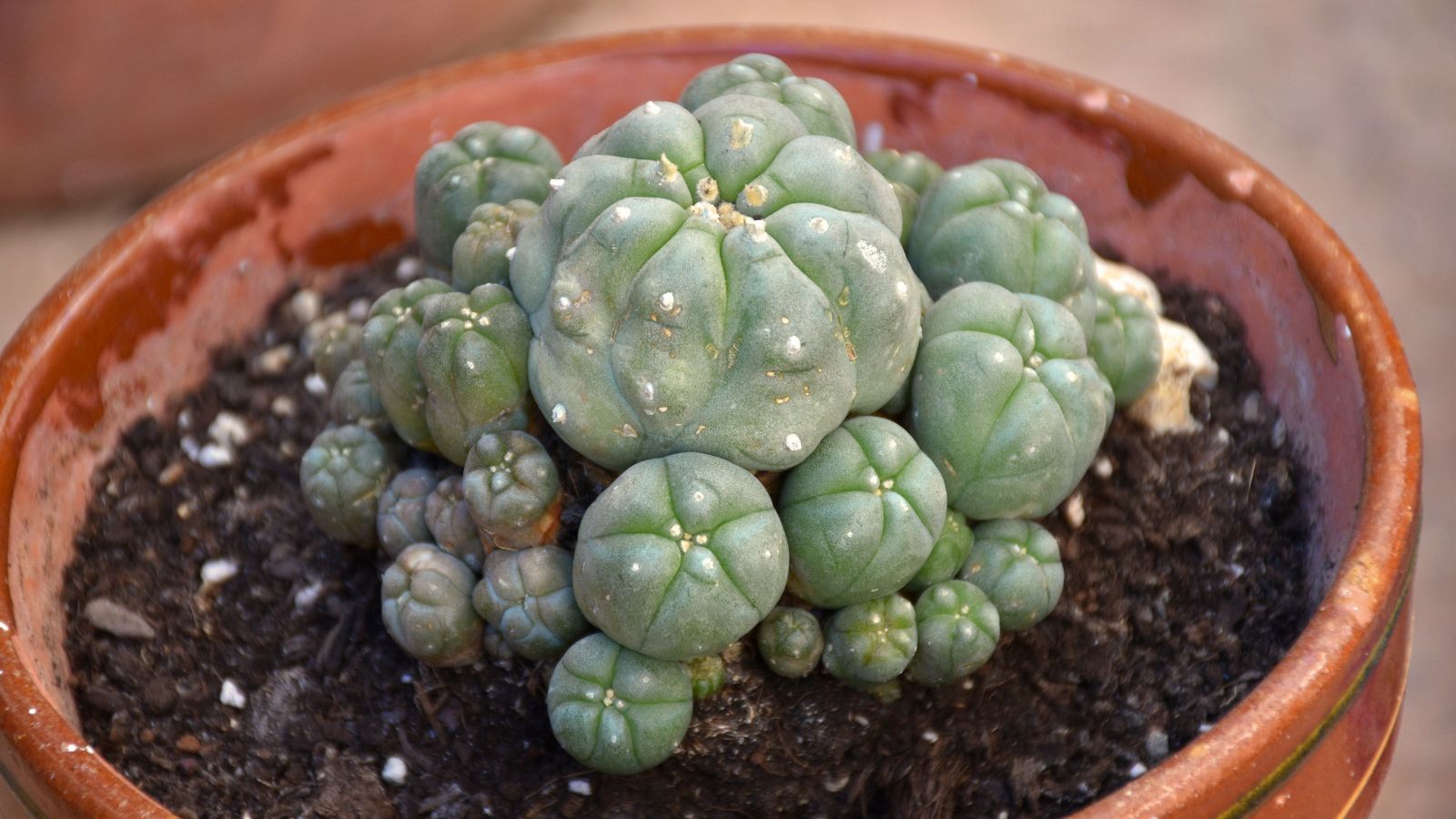
Prehistoric Peyote
A recent radiocarbon study proves prehistoric, peyote use by ancient, native North Americans dating back to between 3780–3660 BCE. The dried cacti, or “buttons” were determined to have been used for their psychedelic properties, because they show evidence of chewing. The 5,700 year old, chewed peyote artifacts originated from the Shumla Cave, near Comstock, Texas, just east of the Big Bend region.
The ancient specimens can be viewed at the Witte Museum in San Antonio, Texas. Besides peyote, the Witte Museum collection also displays evidence of other psychoactive, shamanistic plant use from the Shumla Cave which includes mountain laurel, datura, and wild tobacco.
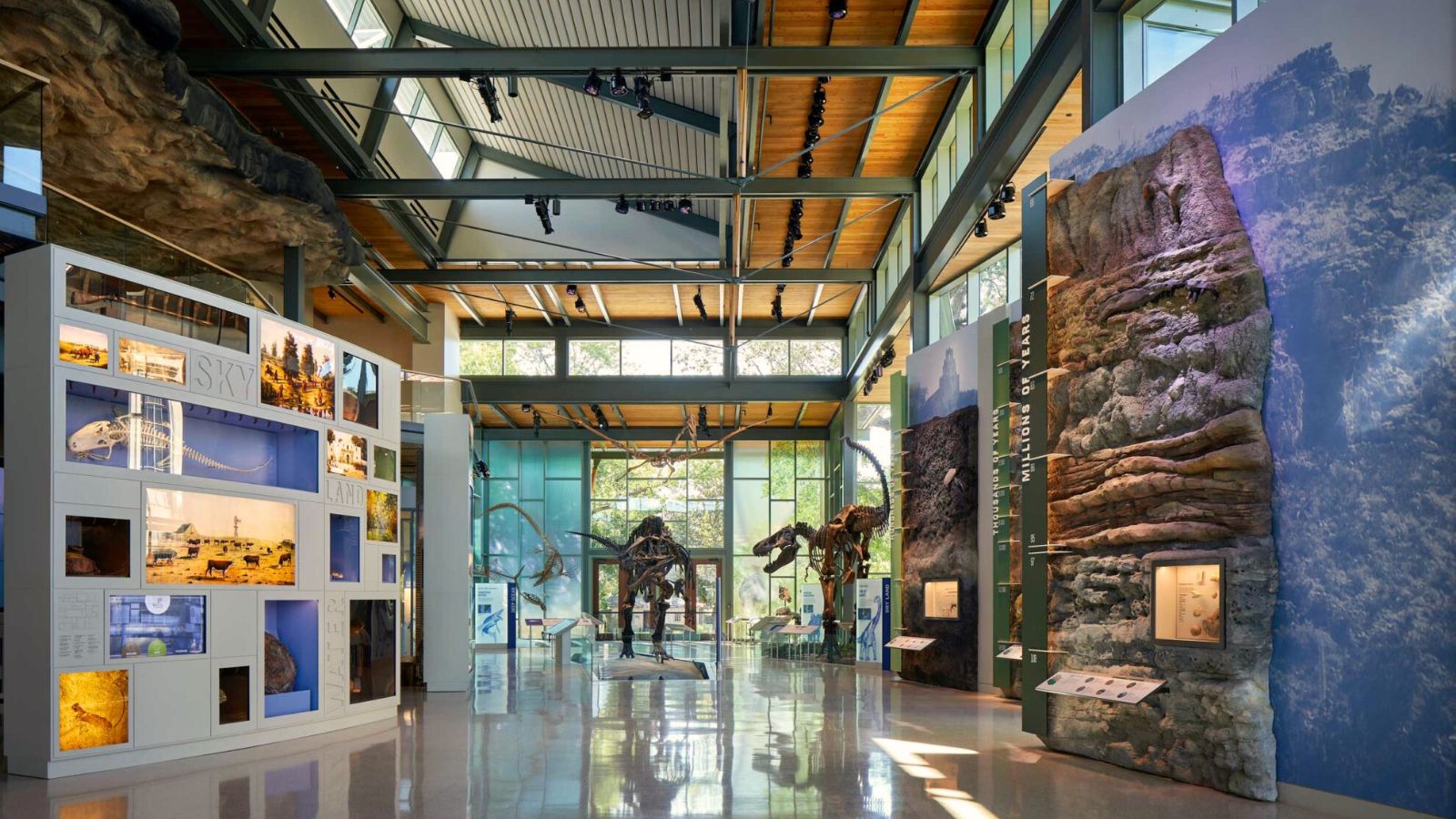
Photo courtesy of the Witte Museum
From the Shumla Cave, the popularity of peyote spread far and wide for millennia to come. The peyote trip through time took a turn to the south at some point, without a doubt. Thus, Mesoamerica became the prime beneficiary of peyotism. Although far to the south of northern Mexico’s deserts, the Maya loved peyote, thanks in part to the cactus’ rugged durability, enabling long-distance travel. Peyote love wasn’t confined to the Maya, however, as it penetrated other areas of Mexico over the centuries.
Pre-Columbian Peyote Popularity
Cultures and civilizations across Mesoamerica enjoyed peyote for its psychedelic effects. One of the first Spanish historians to study and chronicle Mesoamerican culture, Fray Bernardino de Sahagún, noted peyote use by the Chichimecas and Toltecs at least 1,890 years before the Spaniards arrived in Mexico.
No one knows the exact lineage of peyotism across Mexico. The Tarahumara tribe also played a role in distributing peyote, which may have led to its adoption by more recent cultures and civilizations that we’re familiar with.
For example, the Aztecs also adored peyote. They may have co-opted the tradition from the Tarahumara tribe. Perhaps more probable is that the Huichol people discovered peyote thanks to the Tarahumara.
Who are the Huichol? Although you may not know the Huichol people, they still exist today, and are regarded as the flagbearer of modern, Mexican peyote culture.
The Huichol People—Mexico’s Peyote Guardians
The Huichol, or Wixárika (in their native language), are an indigenous people of Mexico. They live in the Sierra Madre Occidental mountain range, including the states of Nayarit, Jalisco, Zacatecas, and Durango. They also live in parts of the southwestern United States: California, Arizona, New Mexico, and Texas.
A large and historic concentration of Huichol people live in Nayarit and Jalisco, which lie on Mexico’s Pacific coast. A quick look at a map shows that this isn’t close to the desert, however. Huh?
To this day, the Huichol people still take an annual pilgrimage from their Pacific coast enclaves to their desert homeland, some 300 miles away. In the past, most Huichol pilgrims went by foot, and peyote powered the arduous journey. Peyote is well known to boost endurance and energy levels for hiking and pilgrimage purposes, although today, most peyote pilgrims go by car.
Still, the fact that peyote pilgrimage traditions continue testifies to the enduring force of Huichol culture throughout the centuries. Where do they go in the desert? They go to Wirikuta and Real de Catorce.

Huautla de Jiménez Is to Mushrooms as Real de Catorce Is to Peyote
The Huichol pilgrims trek to Wirikuta, their sacred, ancestral peyote lands, inhabited by Hikuri, who is their oldest god, the “peyote god.” They hunt for his personification, peyote of course. Most of the time, they only carry what is absolutely necessary for the hunt—tortillas and water. They descend upon Real de Catorce and the surrounding desert areas seeking Hikuri.
Real de Catorce takes you back in time, hundreds of years, to a place that induces mirages of gold and lost treasure that inspired spaghetti westerns. Surrounded by the Sierra Madre Oriental’s 10,000-foot peaks, the Spaniards founded Real de Catorce as a mining town as they pillaged Mexico of its rich, precious metal deposits.
Just outside of Real de Catorce lies the Cerro El Quemado Wixarika, or the sacred mountain of the Huichol people. This is the holy mountain that serves as the literal and figurative pinnacle of their annual peyote pilgrimage and the site of their ceremonies. For this reason, Real de Catorce has become the center of global peyotism.
Modern-Day Real de Catorce
Many people, especially foreigners, know that peyote can be easily found in Real de Catorce and the sleepy desert pueblos nearby. However, reaching Real de Catorce makes for quite a rough and tough journey, so the town isn’t overrun by tourists like other popular, psychedelic tourism hotspots in Mexico.
Peyote enthusiasts still come through, whether to freelance or to join a local peyote ceremony. The locals welcome you with a smile as you pass their peyote bread for sale. That is to say, the bread does NOT contain peyote; it just looks like it. Also impossible to miss in Real de Catorce is the beautiful, hand-made Huichol art. Local artists create psychedelic, beaded pieces depicting peyote-inspired visions, true to their iconic style.
If you happen to be in Real de Catorce, visit the Antigua Casa de Moneda museum which displays an in-depth history of peyote, the Huichol people, their artwork, and how a legendary Comanche chief bridged Mexico and the United States with peyote.

Photo courtesy of México Desconocido
The Contemporary History of Peyote in the United States
Although French botanist Charles Antoine Lemaire was the first man to identify peyote and add it to the scientific lexicon in 1840, no one impacted peyote’s future trajectory and legacy more than the famous Comanche chief Quannah Parker.
If you don’t know who Quannah Parker is, you’re missing out on one of American history’s most fascinating threads. Quannah Parker played a pivotal role planting the roots of peyote’s popularity in the United States in the late 19th and early 20th century. Read here to learn more about how Quannah Parker popularized peyote and helped found the Native American church.
Around 1887, peyote entered North American pharmacology. A doctor living in Ft. Worth, Texas at the time, by the name of Dr. John Raleigh Briggs, was the first American to write about peyote, after he published an account of his experiments with the cactus in The Medical Register. A number of decades later, peyote’s trip would come full circle in the United States.
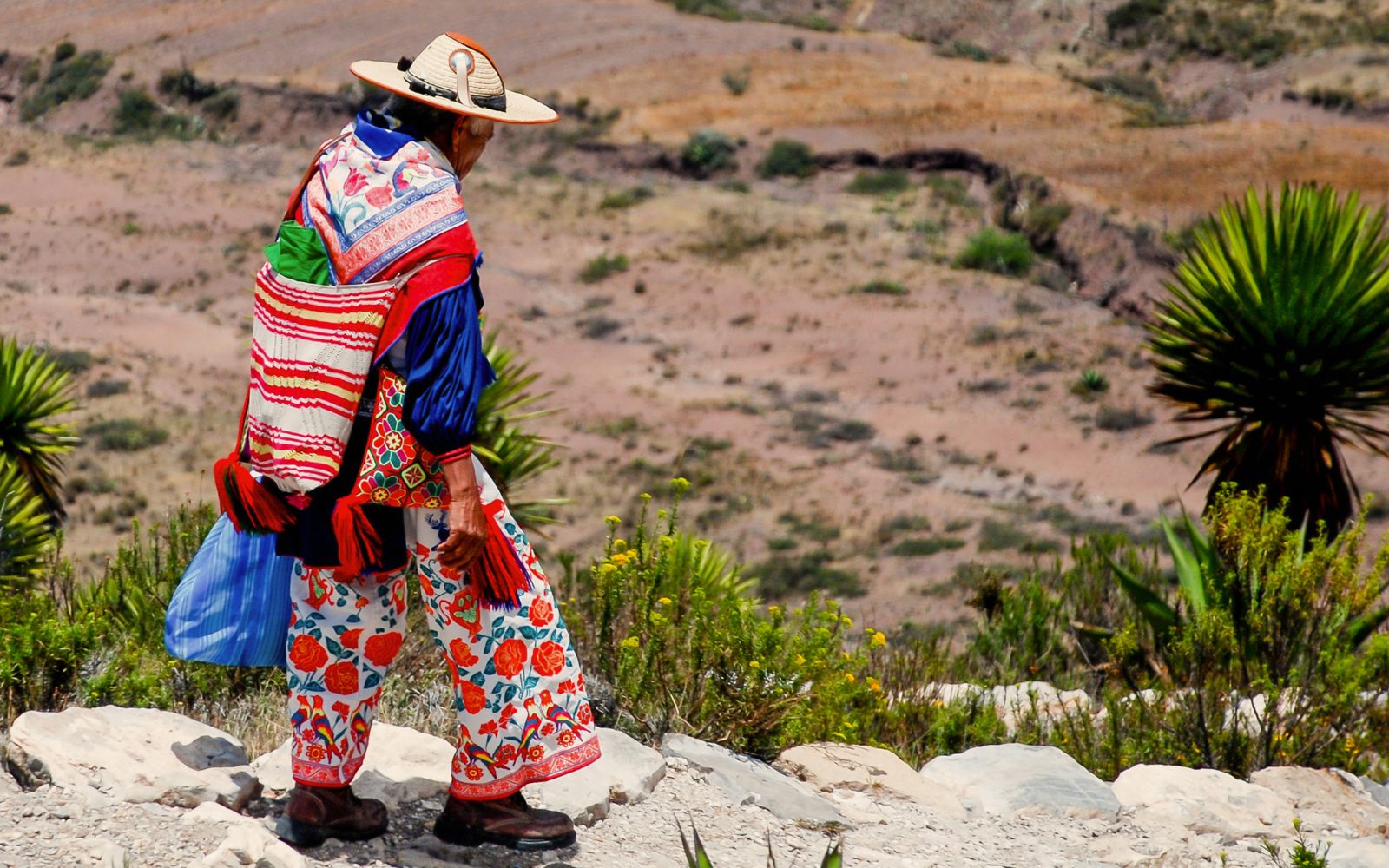
Peyote Makes a Round Trip through History
There’s one last, cosmic twist to peyote’s history, which brings this story full circle. For the most part, peyote stayed underground and unknown until the 1950s. At this time, famous British psychiatrist, Humphry Osmond moved to Saskatchewan, Canada, to work at a mental health facility.
Psychedelics fascinated Osmond, and he helped nurture the explosion of scientific, psychedelic research during the 1950s, making Saskatchewan a hotbed of psychedelic interest.
In 1951, Osmond co-authored a paper studying the similarities between mescaline and schizophrenia
. Osmond’s work drew the attention of Aldous Huxley. After corresponding via letters, Osmond flew to Los Angeles and gave Huxley peyote in May of 1953. Huxley’s peyote experience inspired him to write The Doors of Perception in 1954. Meanwhile, Osmond continued his work and research.
A couple of years later, in October of 1956, Osmond joined a peyote ceremony hosted by the Native American church. This event brings the peyote trip full circle, thanks to Quannah Parker’s influence on peyotism and the eventual founding of the Native American church. Without Quannah’s peyote legacy, Osmond would never have been invited to a Native American church ceremony.
Then, a year later in 1957, Osmond cemented his own legacy by coining the term “psychedelic,” by using the term in a medical paper, thus introducing it to the English language. Osmond borrowed the Greek word for “mind-manifesting,” making the ideal, resonating keynote for peyote’s trip through time and history.
